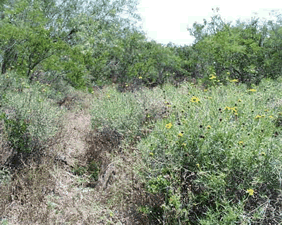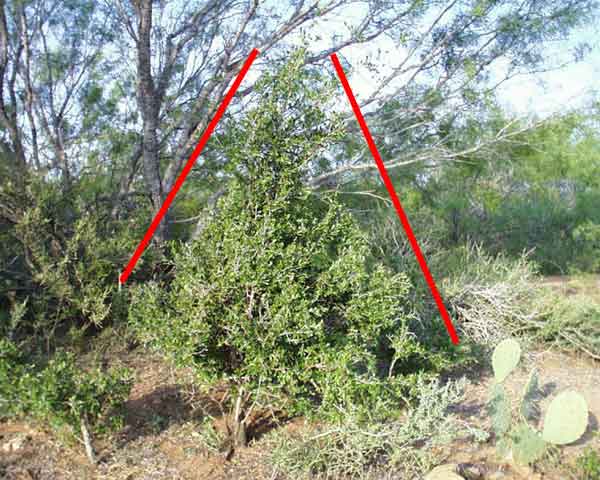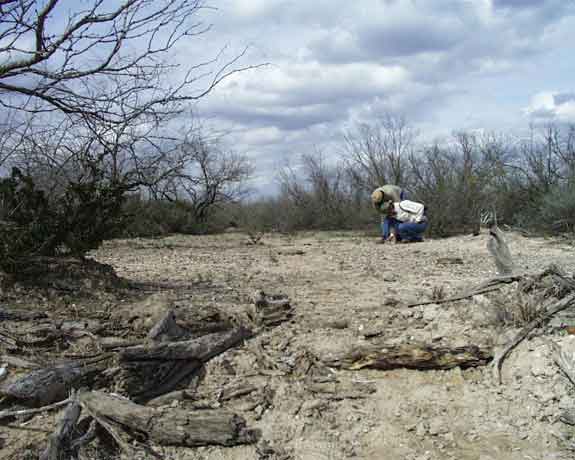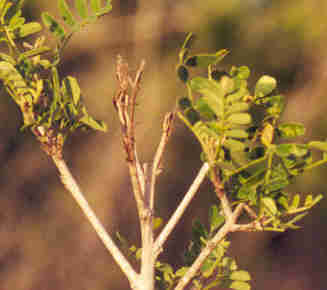South Texas Plains Wildlife Management Vegetation Habitat Quality

Quality wildlife habitat.
Quaility wildlife habitats have a diversity of plant species including shrubs, trees, grasses, and forbs. Plant reproduction, or the presence of seedlings and new growth are an indication of healthy plants and habitats.Wildlife species use the various types of plants to meet their daily needs. While brush is a steady component of the habitat, forbs and grasses greatly enhance the quality of food and cover resources for all wildlife. Overgrazing the the range with deer, exotics, or livestock is detrimental to many wildlife species, including deer themselves.This photo is an example of good wildlife habitat in South Texas. Through proper range, livestock, and wildlife management habitats can be maintained in good condition.

Severly hedged coma plant.
When deer and livestock numbers begin to surpass the carrying capacity of the rangeland, "hedging" is observed. Notice how this coma plant looks as if it has been pruned with clippers. This plant is at a point of excessive browsing and unless pressures is removed the plant's healthy may be in jeopardy. Decreased plant vigor and health occur with excessive browsing, and potentially lead to an early death.

Poor habitat.
If animal numbers are not maintained at (or below) the level of which the rangeland can support, hedging becomes much more severe and habitat quality diminishes. Younger plants are stripped, available forage becomes scarce, and plant diversity declines. Eventually, the habitat could look much like the poor habitat photo.

Deer bite on kidneywood stem.
Cursory observations of shrubs can be made to determine the intensity of browsing pressure on key brush and other browse plants. Inspection of the terminal end of twigs and stems of shrubs may reveal bites by deer or livestock. The photo to the right illustrates a kidneywood plant that has been browsed by white-tailed deer. Monitoring intensity of browsing pressure on shrubs can help landowners, biologist, and land managers make decisions regarding habitat management. Heavy browsing pressure may translate to increased deer harvest or reduction in cattle stocking rate.
For information on a field guide of south Texas vegetation click on the link below
Taylor, R.B., J. Rutledge, and J.G. Herrera. 1999. A Field Guide to Common South Texas Shrubs. Texas Parks and Wildlife Press; Austin, Texas, USA.